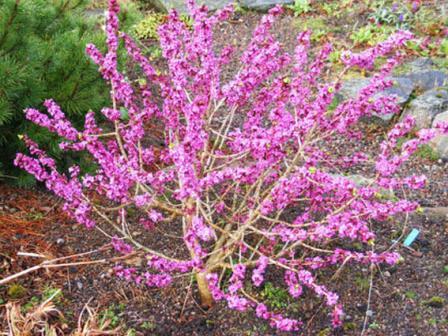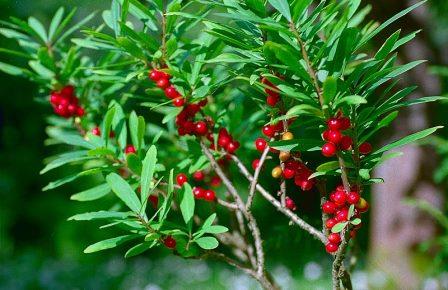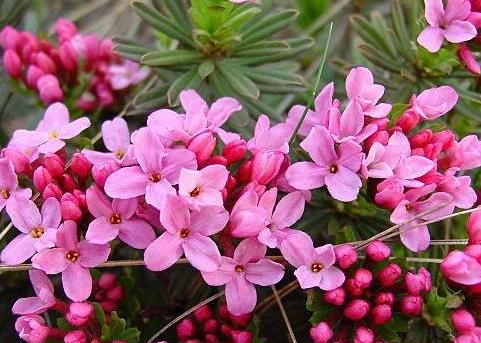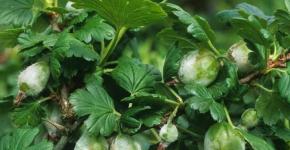Wolfberry - ornamental shrub
Wolfberry is an ornamental shrub that, regardless of variety, has a seductive floral aroma. The plant blooms its delicate fragrant flowers in early spring. This shrub is also called "wolf bast" or "wolf".
All these names should not be confused with the well-known among the people "wolf berries", which are called a number of shrubs (including the wolfberry itself) with inedible and poisonous fruits. Wolfberry is a compact shrub, its height, depending on the variety, does not exceed 90 - 120 cm.
Some species of this plant are evergreen, others are deciduous. Due to its compact appearance, the wolfberry is perfect for single decorative plantings. With it, you can decorate the front garden, alpine slide or terrace by planting it in a large container.
Wolfberry fits well in compositions with plants (shrubs, bulbs) that bloom in early spring. To enjoy the sweet aroma of the wolfberry more often, it can be planted along paths in the garden.
cultivation
Planted "wolf's bast" in early spring or autumn in sunny areas that are not blown by the winds, some varieties can grow in partial shade. The soil for planting should be permeable, rich in humus.

Shrubs are planted with young seedlings, as adult plants take root worse.
When planting and caring for a wolfberry, you need to work with gloves, as the plant is poisonous and can cause skin irritation.
To plant a wolfberry, you need to choose places inaccessible to children, because the fruits of the plant are poisonous. Just a few berries that get into the stomach can be fatal.
Care
The plant does not require special care, it is enough to mulch the soil with compost or humus in spring and autumn. The plant is propagated by cuttings. They root well in a mixture of sand and peat. The second way is to sow berries directly into the ground in late autumn, however, in this case, germination is very low.

In hot and dry weather, the wolfberry can infect the spider mite, which is easy to detect on leaves and shoots. This pest sucks moisture from the leaves, as a result, they fall off. Therefore, during dry periods, the shrub must be watered in a timely manner.
Species, varieties
In Russia, 17 out of 50 wolfberry species that are found in Eurasia grow. Some species of these plants have leathery leaves resembling laurel leaves. From here came another name for the wolfberry - daphne, which in Greek means laurel.
Below are the most common types.
- fragrant wolfberry. This shrub, whose homeland is China, is shaped like a dome. In Russia, it rarely grows above 30 cm. In early spring, red fragrant flowers with a cherry tint appear on its branches. The plant blooms earlier than other species. The most famous evergreen variety is "Variegata". In winter, these plants in the middle lane need to be covered.
- deadly wolfberry, the second name is "Wolf's bast". The height of the plant is about 1 m. This species is also distinguished by its early flowering, but it blooms after the previous species. The duration of flowering is 2-3 weeks, and it begins to bloom before the leaves appear. If you cut the branches of a bush in winter and put it in a vase with water, then the bush will bloom with fragrant flowers. Famous varieties "Rubra Select" ("Ruby Glow") with large flowers of dark pink color and red berries and "Alba" with creamy white flowers.
- Berkwood's wolfberry. This plant blooms pink in May. The color of the flowers gradually turns white. This species belongs to the group of hybrid varieties that do not form berries. Some varieties have decorative leaves with a light border around the edges. The well-known variety "Somerset" has evergreen lanceolate leaves, blooms in light pink tones.
- Yulia's wolfberry. Low dwarf shrub no more than 30 cm high. It is a relic plant and is listed in the Russian Red Book. The plant blooms from April to May with small fragrant pink flowers. At the end of the summer season, it may bloom a second time. The plant has very deep roots (up to 1.5 m deep), tolerates frost well under snow.
Medicinal properties
Wolfberry, like most poisonous plants, has medicinal properties. In medicine, bark, berries, leaves, shoots are used. Preparations are prepared from the bark, which are used to treat joint pain, as well as eye and skin diseases. The flowers of the plant are used as an effective remedy for worms.

Alcohol tinctures of the wolfberry treat sciatica, gout, rheumatism, as well as various tumors and abscesses. All wolfberry preparations, with rare exceptions, are used as an external remedy and according to the doctor's recommendations.
Wolfberry - an ornamental shrub with the aroma of delicate flowers, will decorate your garden earlier than other plants in the spring.
Video: Wolfberry - ornamental shrub


